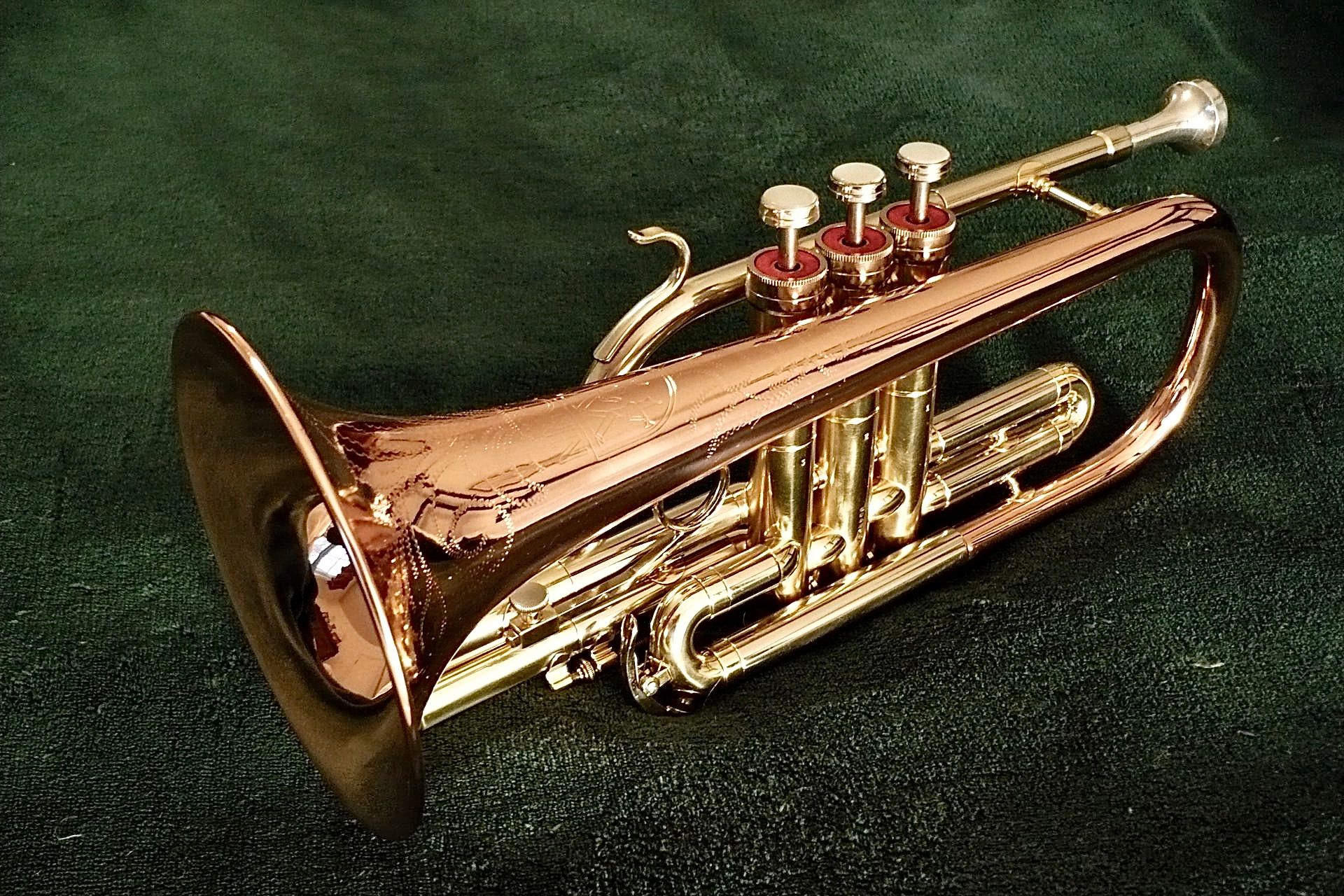Universal copper top and bottom valve caps
-
Looking for a copper colored top and bottom valve caps.
Did not have any luck researching the ACB or Schiller websites.
Also do not want to buy from KGU. The price is above what I want to pay for the caps.
On ebay there are several affordable caps but not sure of fit or quality.
Any recommendations would be appreciated. -
@Gendreauj
Three questions:- For which instrument(s) do you want these caps? Threads on these caps can be wildly different.
- Do you want normal or heavy caps?
- If it is just optics - why not just buy a normal spare set and have them galvanically coppered?
-
Looking for copper, bronze or gold color caps for the silver color cornet.
Surprisely parts are interchangable between my PRC rebranded cornets.
The newest cornet I bought is a copper color. Tried the valves caps on the silver cornet, they fit and look good.
Yes it is mostly visual. Want lightweight caps for the cornet.
Definitely want the least expensive option. -
I had Jason Harrelson send 4 valve caps just last week for my out of production flugelhorn that had no parts listed on an internet search. Contacted Jason and he had the parts he made personally. The question is how expensive is too expensive? Jason charged $137 for 4 silver valve caps. I know he makes copper tops as well. So if you strike out finding on line, send a message to Jason on the Harrelson web site.
-
@Dr-GO
Thank you for the information. Have not decided yet what the budget we be for the caps -
I’d just get an inexpensive set of caps that fit correctly and have them copper plated. As part of an overhaul years ago, I had an entire bell copper plated, and it wasn’t very expensive at the time.

-
Thanks Dale for the information and photo of your cornet.
Waiting on email from Jim Laab music on valve caps options. The caps from the Schiller do fit on the ACB cornet. -
Why not just swap the caps between the 2 instruments, the bottom caps do not matter but if the top caps are of a different thickness the valve alignment will be effected.
If you are adventuress there is a great number of DIY copper plating instructions on youtube,Regards, Stuart.
-
Great suggestion Stumac.
Did swap out the top and bottom valve caps of the cornets. Silver cornet now has copper colored top and bottom caps. Copper cornet has silver top and bottom caps. Both the cornets looking much better visually to me.
Now I looking for silver valve caps the same style of the copper cornet. My first priority is silver bottom caps.
Until proven otherwise I think Jim Laab music is my best source for caps.
One of my major goals is to spend the least amount of money on cornet parts. Trying to only spend money on valve oil, slide grease and the jazz/ blues instruction books. -
You need to beware of swapping parts such as valve top caps.
Older instruments were built by hand and each part of the structure of the valve was hand fitted to each other and were unique to the original valve they were fitted to.
Buttons, top caps, stems, valve guides, springs, and the valve body itself, could each vary in size and while they work flawlessly when in their original hand fitted position swapping for example the stem from valve one to valve two could result in one or both the valves binding with the cause not being apparent.
All parts might measure as being identical but these are often close tolerance parts and can easily bind with each other requiring the hand fitting of each part.
Swapping the top cap from valve one to valve two or valve three could also result in the valves binding.
Only the original position at manufacture of each part of each valve will be the correct position.
I have experienced this issue where an old instrument had binding valves there was no fix for this until I swapped valve stems and valve top caps around and found the original manufactured assembly positions.
We dont know if a player many years ago when cleaning the instrument, disassembled all the parts and did not pay attention to which part belonged to which valve.
Why would we believe this is important in a modern age where all small parts are made by machine to be identical and do not have to be hand fitted to each other for them to work correctly together.
Once I had found the correct original assembly positions of valve caps and valve stems on this problematic instrument the valves worked perfectly and flawlessly.
This is the major improvement that has been given to us by modern precision manufacturing techniques.
Any instrument older than 1970 or thereabouts might suffer this problem.
Any instrument earlier than 1950 almost certainly would have each individual part hand machined hand lapped and hand assembled.
Scavenging parts from other instruments probably will be fine but this cannot be guaranteed.
-
This post is deleted! -
@Trumpetb In principle, you are perfectly right. But in this case, the insrument in question is a relatively modern, almost new instrument of Chinese mass production... The main question here is, whether it is worth while going to any length to achieve this for ths kind of instrument...
-
As a very amateur comeback hobbyist player these cornets are good enough for my needs.
Buying these Chinese cornets does stop me for running up my credit card.
In the past, I have owned many used vintage, student, intermediate horns. Also several modern professionals trumpets.
Quit playing for four years and I am shocked at the current price of used horns.
I bought my new ACB doubler for less than a beat up intermediate cornet on eBay.
Both cornets together are cheaper than a used quality professional cornet. -
-
@Gendreauj said in Universal copper top and bottom valve caps:
As a very amateur comeback hobbyist player these cornets are good enough for my needs.
Buying these Chinese cornets does stop me for running up my credit card.
In the past, I have owned many used vintage, student, intermediate horns. Also several modern professionals trumpets.
Quit playing for four years and I am shocked at the price of used horns.
I bought my new ACB doubler for less than a beat up intermediate cornet on eBay.
Both cornets are cheaper than a used quality used professional cornet.If the cornets play well for you and you like them, there’s nothing wrong with that! I used to own all sorts of older, inexpensive trumpets and cornets that I bought mainly just to see how they played. I came to the realization that for what I’d spent on them, I could have bought a couple nice used upper-tier horns. Over a span of a couple years, I sold most of them that I never played (and some were really nice instruments) and kept the ones I did. Variety is the spice of life, as they say, but I decided the closet full of old, rarely-played horns might be better enjoyed by other people. I’m down to 10 now, and that seems to be a good assortment - two antique 19th century cornets I kept as collectors’ items, two more modern cornets, 3 Bb trumpets (one is an inexpensive one for “high traffic” gigs), a C trumpet, an Eb/D trumpet, and a flugelhorn.
Sounds like you’re enjoying yourself, and new and/or different horns are a good incentive for practice. Have a good time with it and add some bling to them if you like. I’ve had a few horns customized in the past…nothing wrong with that.
-
Thanks for sharing and your kind words Dale.
Previously I bought many horns for the experiences too. Need to work on improving my playing skills.
Once I purchased modern day professional horns never looked back. Thought about buying the same model cornet in different finishes. Although from different stencilled PRC suppliers, that is what happened.
Starting over from a four year absence can be joyful but very annoying too.
Have slowly improved but not yet back to where I was in the past. Using my old method books measures my progress.
I am waiting on the How to practice Jazz book. -
Bought silver bottom caps from KGU. I have purchased from them in the past.
In the future I will buy after market silver top caps. -
As your question is resolved, I will close this thread.
-
Locked by
 barliman2001
barliman2001